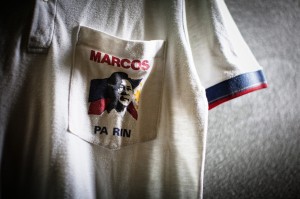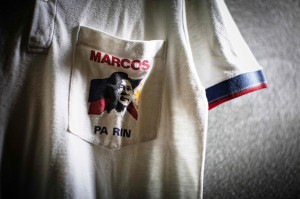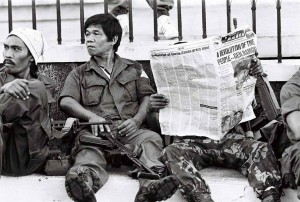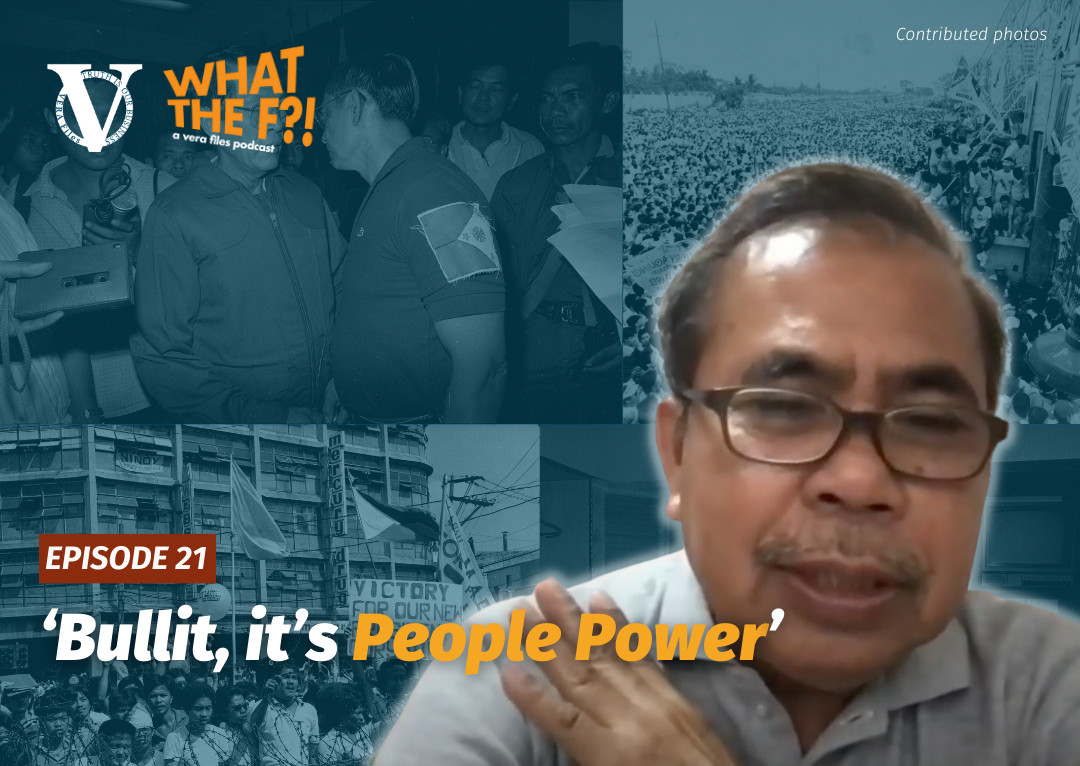By LUZ RIMBAN

THE NATION is celebrating the landmark EDSA People Power Revolution, but Philippine history might have run a different course had deposed president Ferdinand Marcos only addressed the question of succession early enough.
It was the early 1980s and unknown to the public at the time, politicians—both Marcos’ allies and his opponents—were in a panic over who would succeed him: He was suffering from the debilitating lupus erythematosus.
Former broadcaster and Marcos aide Lito Gorospe recalls that Marcos had undergone transplants three or four times, but this was never made public. Instead, his public relations machine downplayed, if not denied outright his health problems.
The strongman’s message, according to Gorospe, who is now the Marcos family’s spokesperson, was: “Yes, I’m sick but I’m still in control.”
“So that the people will not panic. That was the underlying reason…and not for anything else,” he added.
But there was no hiding Marcos’ failing health. Every time he appeared on television, the public saw a bloated Marcos—the once forceful and charismatic strongman had turned into a ghost of himself.
And it was not the people who panicked but politicians both in Manila and in exile in the United States, among them former Sen. Benigno “Ninoy” Aquino Jr., considered as Marcos’ nemesis.
“I was made to understand, from the interviews, and from the aides of Sen. (Salvador) Doy Laurel, that the late Senator Ninoy was convinced that President Marcos was dying,” Gorospe said. (Laurel was then leading the opposition party Unido.)
This was the overriding reason Aquino dared to return home, despite having been warned by no less than then First Lady Imelda Marcos that he would be in danger, Gorospe said.
Aquino might have wanted to be around in time for the search for a successor in case Marcos died.
The 1973 Constitution then in place spelled out the line of succession. Article VII Section 5 reads: “In case of permanent disability, death, removal from office, or resignation of the President, the Speaker of the National Assembly shall act as President until a successor has been elected for the unexpired portion of the term of the President.”
Aquino, himself a charismatic leader and a former political prisoner turned exile, would have been a frontrunner in an election for president. But many other politicians had been harboring dreams of replacing Marcos, reportedly among them his defense minister, Juan Ponce Enrile, and even his wife Imelda.
But Aquino came home on Aug. 21, 1983 and made history when he was gunned down on the airport tarmac in a plot whose mastermind remains a secret to this day. His assassination sparked protests across the country that culminated in EDSA 1 in February 1986 after his widow, Corazon, was cheated in the snap presidential election that pitted her against Marcos.
Ironically, said Gorospe, Marcos had just had a kidney transplant the day Aquino arrived from his three-year exile.
When he addressed the nation in a press conference after Aquino’s assassination, Gorospe recalled, “The President was very, very weak. The venue was a little dark. It was intentional.”
“He was thin, he did not look good because he was exhausted from the operation and his recovery was very slow,” he added.
This was not the first time Marcos’ media machinery manipulated images to deflect reports he was sick.
One time, Marcos had to undergo an emergency kidney operation and had to be gone for four days. To cover up his absence, his press people shot photos of him before the operation, showing him in various activities.
One shot showed him jogging. “There was even a shot (showing) he was on a helicopter,” Gorospe said.
The photos were released to the media while Marcos was recovering at the Veterans’ Memorial Hospital and gave the impression he was around, and up and about the whole time.
In the U.S. in the early 1980s, other Filipinos in exile were concerned about the problem of succession.
Former journalist and public relations practitioner Max Edralin, who is Marcos’ cousin, recalls talking to some people who represented exiled Filipinos.
“There seemed to be a consensus that they (exiled Filipino politicians) would sign anything that Marcos wanted them to sign and he could keep his money, provided he would call for an election where he was not a participant. ‘Please relay that to Marcos,’” Edralin recalls being told.
The chance to convey that message to Marcos came in 1983, during the wedding of Marcos’ younger daughter Irene in Sarrat, Ilocos Norte.
Edralin said he tried approaching Marcos but realized it was not the best time to talk about serious matters. He tried seeing Marcos in Manila after that, but the cordon sanitaire at Malacanang refused to give him an audience with the president.
Edralin explained he was bearing a message from Filipino exiles in the U.S. and was told, “If that is your mission, he will not allow you to see him, much as we would like you to see him.”
Edralin eventually gave up trying to see his cousin after he had breakfast with a fellow Ilocano, then Justice Felix Antonio.
“Felix told me, ‘Max, Ferdinand had reached a point where he believes he is infallible. And if he says that he will continue to be in power, there’s no way you can change that,’” Edralin said.
Now 79, Edralin regrets not trying hard enough to talk to Marcos.
He said, “Imagine if I was able to talk to him and he was persuaded to call for the election where he was not a participant, and he would have been allowed to go free. That would have changed history.”


